|
|
 |
| Welcome | Getting Started | Resources | Site Map |
Week 10
Dog and Cat Nutrition |
Instructions for listening to audio clips
- Download the QuickTime Player to listen to the audio files.
- Read the QuickTime Instructions for installation help.
- Download the RealPlayer to listen to the audio files
- Instructions are on the RealPlayer download page
Needs of Dogs and Cats and Photos
Follow along with the audio...
Energy Needs of Dogs and Cats
- Factors to consider for energy needs
- Body Weight
- Size (height and length)
- Activity level
Photos
Courtesy of Washington State University, College of Veterinary Medicine
Wolfhound
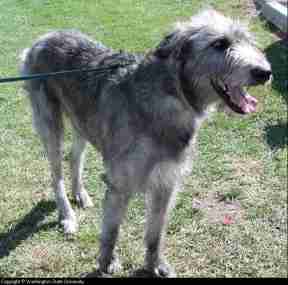
Great Danes
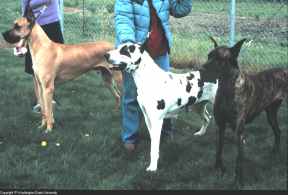
Mastiff

Chihuahua

Dachshund

Working Dogs - Image by J. McKelvy
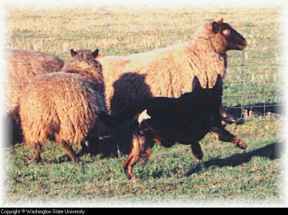
Playing Dogs - Image Courtesy of Bob Godfrey
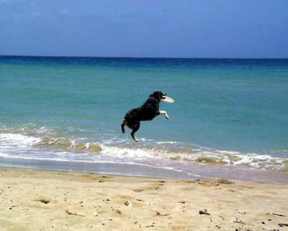
Exercise
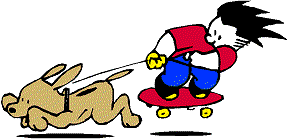
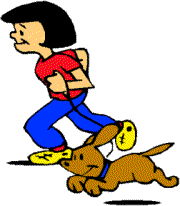
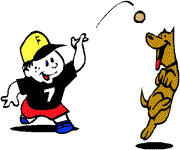
Couch Potato
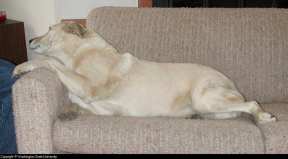
Energy Needs of Cats and Dogs
- How does one determine the energy needs of a dog or cat?
- An equation for calculating the energy requirements of dogs is difficult because of the tremendous variation in the size and weight of different breeds.
- Factors to consider for energy needs
- Body weight
- Size of the animal - height and length
- Activity levels
A principle of energy use in endothermic animals is that as body weight
 energy needs
energy needs ![]() per unit wt.
per unit wt.
This is related to the total surface area of the animal which will be a function of body weight and size. To properly account for the surface area, the body weight of the animal is given an exponential number such as 0.67 and 0.75.
Metabolic body weight can then be calculated by the following equation.
ME requirement = KW^.67
where K is a constant related to activity level and W is the weight in kilograms. The product of the equation will be measured in kcal ME/day and is for a maintenance diet.
Because the body size of cats do not vary like those of the dog, the energy needs of the cat can be related directly to body size. An equation for a moderately active cat would be : ME requirement = 60 kcal / kg x W kg
Energy density of pet foods consists of the energy content of diet/ unit weight or volume.
Caloric density is expressed as ME kcal / kg or lb.
A typical dry dog food may contain 3,500 kcal ME / kg. Given this value, how much does one calculate the amount to feed a dog per day?
Calorie requirement of dog ÷ ME value of diet = kg of diet/day. Convert kg to grams or ounces.
Determine the weight of diet / cup.
Weight of dog food /day ÷ weight of cup
- Conversion factors
- 1 kg = 2.2 lbs.
- 1 lb. = 454 grams (g)
- 1 lb. = 16 ounces (oz.)
- 1 oz. = 28.4 grams
These same calculations can be used to determine the amount of food needed for a cat per day. A typical dry cat food may contain 4,200 kcal ME / kg. How much food would an 8.8 lb., moderately active cat require on a daily basis?
| |
| Welcome | Getting Started | Resources | SiteMap |